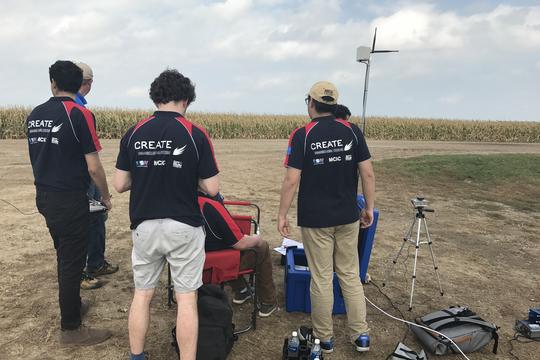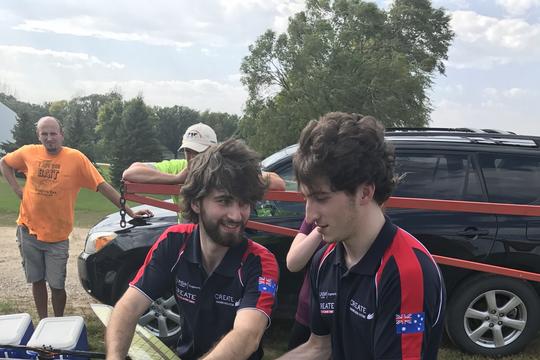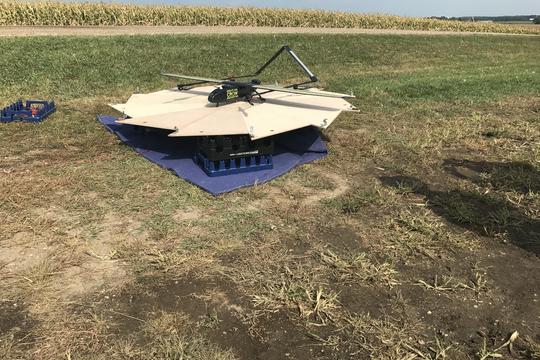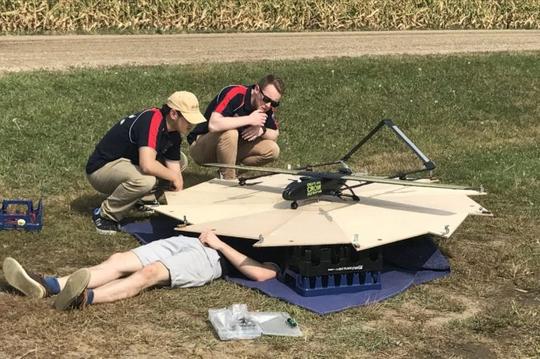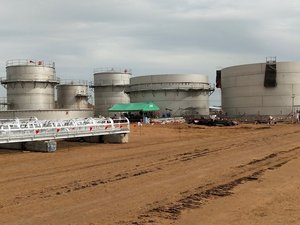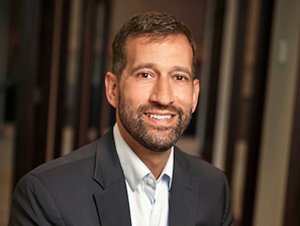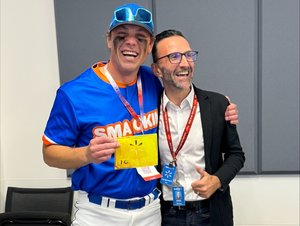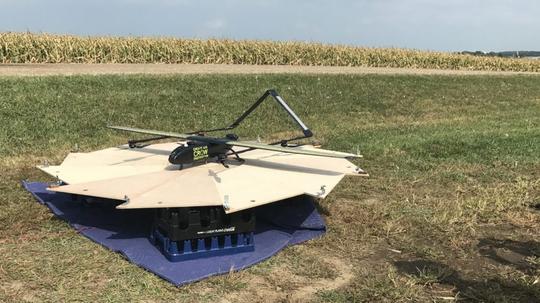
On a dairy farm off a dirt road in Watkins, Minnesota, farmers, engineers and agriculture technology leaders gathered at the edge of a corn field for an international drone competition that they hoped would reveal exciting new uses for emerging tech in the state's oldest industry.
The small town of less than a thousand is an unlikely place to garner international attention. But Anthony Feizi-Sobbi, a member of the Austrailian team participating in the challenge, saw the remote dairy farm a bit differently.
"We're at the crossroads here of doing something that could really make a difference," he said.
Feizi-Sobbi and the half-dozen other members of Create UAS flew halfway across the globe to compete against Sandhill Robotics of Fayetteville, North Carolina and American Robotics of Boston, Massachusetts in the Land O' Lakes Drone Challenge. The competition tasked each team with building a completely autonomous drone capable of mapping fields and monitoring crops with no human interaction or support.
Over the course of three days, each team was given two, four hour-long attempts to collect data from three 70-acre fields. After each data collection, the machine would need to land, recharge itself and take off again with no human interaction.
"It's impressive to look at the depth of knowledge required to bring all these things together," said Joel Wipperfurth, the AgTech Applications Lead at WinField United, Land O' Lakes' innovation arm. "It's easy to underestimate how complicated this stuff is."
Wipperfurth added that it's difficult to get the drones to adjust to changing wind speed in the field and classify other flying objects like bird or planes to determine if they're a threat. Then, after its flight, the machine needs to navigate back to its base and land precisely where it's supposed to on a charging pad.
WinField began preparing for the competition more than a year ago. Around 40 teams from across the globe submitted proposals. WinField selected three groups to build their solution, then fly to Minnesota to demonstrate it. Each of the finalists were given $5,000, and were qualified to take home additional funds of up to $140K. A spokesperson for Land O' Lakes said that the company would announce a winner in the coming weeks.
On the last day of the competition, team members, judges and farmers milled casually around the open field, patiently waiting for the drone to take off. When the audience heard the angry buzz of the drone's tiny propellors, conversations stopped and audience members turned to watch as they waited for the drone to fly.
Team members spent hours fussing with propellors and power sources, even opting for some open-heart drone surgery to take off the required camera, hoping less weight would get it the drone in the air.
"There's still a lot of support needed. some concepts worked in a lab setting, but the real world adds more challenge."
Ultimately, it didn't fly. Faizi-Sobbi said that it had successfully checked all boxes in lab tests prior to arrival.
"I think it doesn't like the American weather," he joked.
Create UAS is a team of engineering students from the University of New South Wales Sydney. The team said that they used all $5,000 of their finalist prize money to ship the drone, and themselves, to Minnesota for the competition.
They were the last team to demo their device. The others, Sandhill Robotics and American Robotics, brought their bots to the farm earlier that week. Both teams were able to get their drones in the air, but suffered several complications. One drone lost power mid-flight and crashed into the corn field it was surveying. Engineers had to trek through thick, shoulder-high corn to find it.
"There's still a lot of hurdles and support to be done," said Saad Bedros, a judge at the competition and director of industrial relations for robotics at the University of Minnesota. "A lot of concepts were able to be demonstrated in a lab setting, but now they're testing in the real world, which brings added challenges."
Steven Landwehr manages Westland Dairy, the farm where the competition was held. Landwehr explained that quite a few farmers already incorporate technology to their land, sometimes using tools provided by WinField. He added that some farms currently use drones to monitor their crops and make scouting decisions.
"What isn't available right now is the autonomy," he said. "We don't have enough time or resources to make sure [the drone] is working."
Landwehr said that he enjoys following technology, which was one of the reasons why he volunteered to host the competition at his farm, which is part of the Land O' Lakes co-op. He added that once he found a proven use for drones, he would be eager to give it a spin at Westland Dairy.
"The designs are there and there's potential. It just needs a little more time and R&D," Landwehr said.

